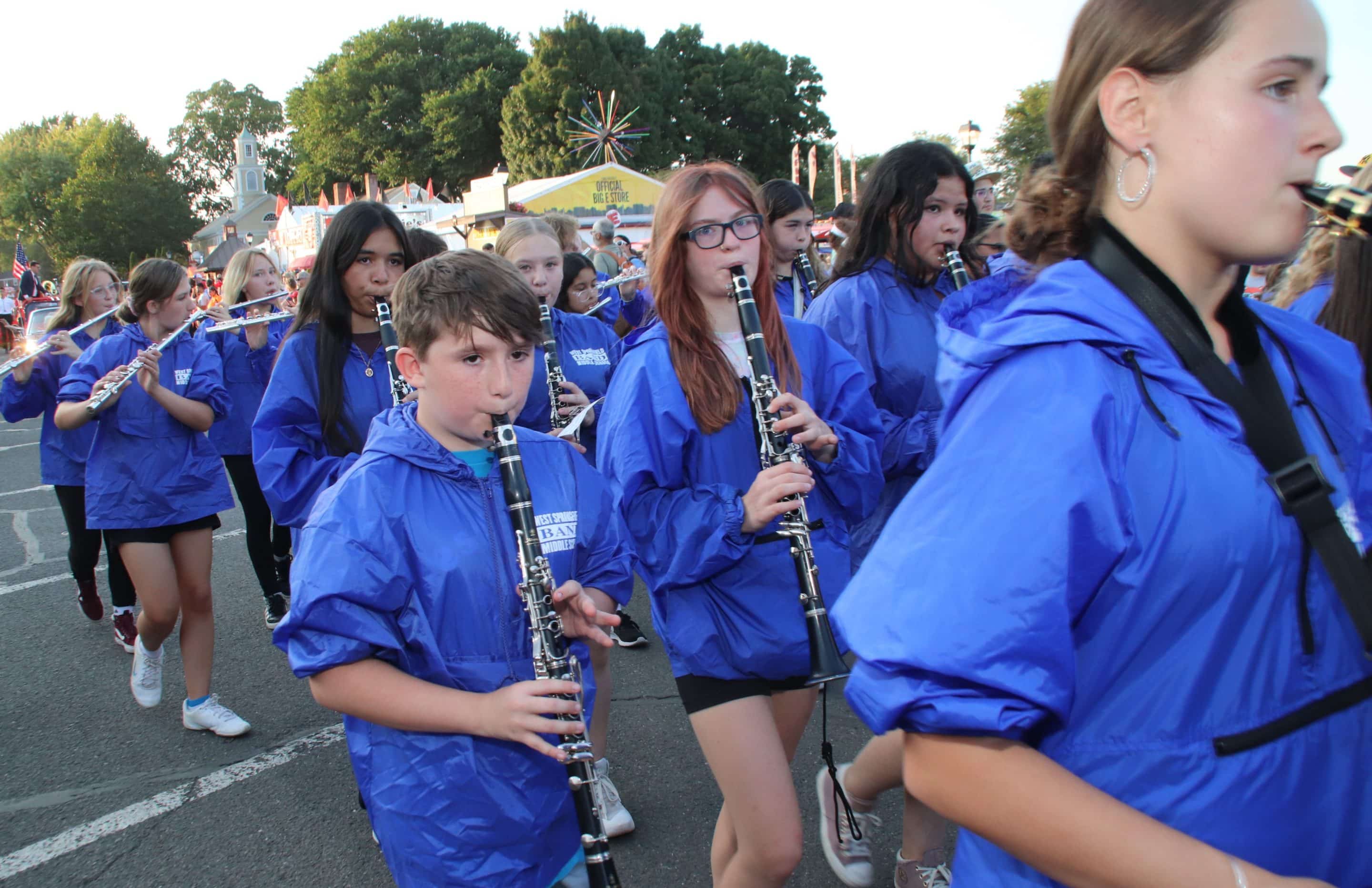West Springfield Middle School band members march in the daily parade that honored West Side on Sept. 16, 2024.
Reminder Publishing file photo
WEST SPRINGFIELD — A recent study found that the Eastern States Exposition economic impact on Hampden County was $235 million in Gross Regional Product and a “record-breaking” $1.167 billion across New York and New England in 2024.
Eastern States Exposition President and CEO Gene Cassidy said that the agricultural fair is one of the top economic engines in the region, creating over 8,000 jobs across New England that generate $439 million in personal income and $19 million in tax revenue for Massachusetts alone.
“These are not abstract numbers,” Cassidy said. “These are tangible, community-rooted impact.”
The numbers were unveiled at a July 8 press conference inside the Eastern States Exposition’s Brooks Building in front of community stakeholders and officials.
Regional Economic Models, Inc. was the Amherst-based firm that completed the study by analyzing the economic impact of the Eastern States Exposition using data from 2024 events like Hooplandia, the Big E, the New England Fiber Festival, the Storrowton Village Museum and more.
According to Cassidy, the Eastern States Exposition attracts 3 million people to its grounds across 120 year-round events, including 1.6 million at the Big E — the fourth largest fair in the U.S.
In 1995, the Big E expanded the number of days it opened from 12 to 17. Since then, the Eastern States Exposition has donated 1% of its annual gross income to West Springfield to “build and bolster” the Eastern States Exposition-West Springfield Trust.
According to the Eastern States Exposition, 26 groups benefited from the trust in 2024, including sports teams, food rescues and cultural centers.
Furthermore, Mayor William Reichelt shared that the Eastern States Exposition is currently one of the five highest taxpayers in town.
“Their impact to the community is felt financially to the town, but also to the businesses that benefit from everything that happens in the fairgrounds,” Reichelt said. “But it is not just what happens during those 17 days of the fair … it’s what happens throughout the rest of the year, whether it be Hooplandia … the car shows, horse shows, dog shows, gun shows [and] jam shows. There’s something going on every weekend on the fairgrounds.”
The Eastern States Exposition’s economic impact goes far beyond the $1.167 billion reported, according to REMI Senior Vice President of Business Development Billy Leung. In fact, he said the number is an “undercount” because it only accounts for industries that support the Big E, workers that respend their money and businesses that buy intermediate products.
In reality, the Eastern States Exposition’s footprint is far greater, Leung said, because of the nonprofit’s “multiplier effect” that not only benefits the West Springfield economy, but also the economies of the state, New England and the country.
“We wanted to do something that’s very standard and that’s traditional,” Leung said of the $1.167 billion number. “What we didn’t model in this particular scenario is the businesses that come here, that market, and that continue to grow when they’re back in Pennsylvania, when they’re back in Maine [or somewhere else].”
Although the economic impact is profound and far-reaching, the Eastern States Exposition takes in only about $30 million of the $1.167 billion, according to Eastern States Exposition Board of Trustees member John Robinson.
In his remarks at the event, Robinson said it is normal for the nonprofit to take in 20 to 30% of that $30 million to rebuild and maintain facilities, but only if they do well financially.
“Our share of this is tiny, and the reason it’s tiny is because of our nonprofit mission to benefit not just the fairgoers, but all of the people here in New England,” Robinson said. “We were chartered to be New England’s fair for agriculture, for commerce, for culture [and] for entertainment.”
The Eastern States Exposition is a nonprofit organization that currently features 35 full-time employees year-round. During fair season, that number jumps to around 1,000 on the payroll and another 3,500 on the grounds, Cassidy said.
The organization receives no state or federal tax revenue to support its operations and relies upon the support of its visitors.


